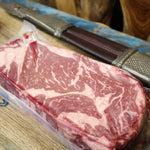
Chapter 3: Feasts Fit for Kings
In this chapter, we traverse the annals of history, peering into the opulent feasts that elevated the consumption of beef into a symbolic act of wealth and power. Through a meticulous exploration rich in details, facts, and anecdotes, we uncover the fascinating narrative of how beef evolved from sustenance to a cultural emblem in ancient civilizations.
Mesopotamia: The Cradle of Culinary Extravagance (circa 2000 BCE)
Around 2000 BCE, in the heart of Mesopotamia, the act of roasting beef ceased to be a mere culinary endeavor and transformed into a grand spectacle of excess. Recorded on cuneiform tablets, these feasts were opulent displays of power and social stratification. The culinary theater unfolded with roasted beef as the protagonist, adorned with exotic spices and culinary finesse. Mesopotamian elites utilized these feasts not just for gastronomic indulgence but as platforms to flaunt their wealth and sophistication.
The consumption of beef, during these Mesopotamian banquets, wasn't just a physical necessity; it was a visual and olfactory symphony that resonated through the halls of power.
Greece: The Symposiums of Flavor (5th century BCE)
Transitioning to ancient Greece, specifically Athens in the 5th century BCE, we encounter a society that celebrated the pleasures of roasted meats, with beef taking center stage. Public gatherings and private symposiums became arenas for culinary theatrics, where the roasting of beef was elevated to a ritualistic art form. The philosopher's discourse mingled with the aroma of roasting beef, creating an intellectual and sensory tapestry that defined the era.
Greece, a crucible of culture and intellect, infused the consumption of beef with philosophical undertones, creating a unique fusion of gastronomy and intellectualism.
Roman Empire: Convivia of Decadence (1st century BCE)
In the 1st century BCE, the Romans inherited and expanded upon the culinary traditions of the Greeks, transforming feasts into extravagant displays of power and abundance. The convivia, grand feasts of the Roman elite, were characterized by an excess of roasted meats, with beef playing a prominent role. Cattle, raised and slaughtered in abundance, became symbolic offerings to the gods of opulence.
The convivia weren't just feasts; they were calculated displays of wealth and influence, where the consumption of beef was woven into the very fabric of Roman societal dynamics.
Middle Ages: Roasting Prowess (12th century)
As the Middle Ages unfolded, the tradition of roasting beef reached new heights. By the 12th century, feasts featuring whole cattle turning on spits became commonplace. The crackling fires mirrored not only the culinary prowess of the time but also the social dynamics of medieval society. Beef consumption, once the exclusive domain of the aristocracy, now permeated through various strata of societal hierarchy.
Roasting, during the Middle Ages, became a performative art—a testament to human ingenuity and culinary mastery.
Renaissance: Democratization of Beef (16th century)
Transitioning into the Renaissance era, the consumption of beef underwent a democratization. No longer confined to grand banquets, beef found its way into the daily meals of common folk. The 16th century witnessed not only a democratization of beef consumption but also a culinary renaissance. Cookbooks of the time, such as Bartolomeo Scappi's "Opera," showcased the versatility of beef in Renaissance kitchens.
The Renaissance era wasn't just a period of cultural rebirth; it was a culinary awakening where beef became a canvas for culinary innovation.
In conclusion, the story of beef consumption, as it weaves through Mesopotamian banquets, Athenian symposiums, Roman convivia, medieval feasts, and Renaissance kitchens, is more than a culinary journey. It is a reflection of societal dynamics, power structures, and the evolving relationship between humanity and its sustenance. The sizzle of beef over an open flame, in each epoch, echoes through the pages of history, narrating a tale of opulence, cultural evolution, and the enduring bond between humanity and the gastronomic arts.



